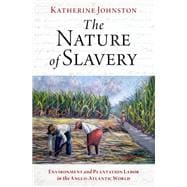In the late eighteenth century, planters in the Caribbean and the American South insisted that only Black people could labor on plantations, arguing that Africans, unlike Europeans, had bodies particularly suited to cultivate crops in hot climates. Historians have mainly taken planters at their word, assuming that they observed differences in health between Black and white bodies and that these differences underpinned the maintenance of an enslaved Black plantation labor force.
In The Nature of Slavery, Katherine Johnston disrupts this longstanding claim about biological racial difference. Drawing on extensive personal correspondence, colonial records, and a wealth of other sources, she reveals that planters observed no health differences between Black and white people. They made their claims about people's ability to labor in spite of their experiences, not because of them. For planters and physicians, local environments, much more than skin color, affected bodily health. Moreover, they thought that all bodies--African, European, and creole--responded similarly to various environmental conditions on plantations. Yet when slavery and their economic livelihoods were at stake, slaveholders and slave traders promoted a climatic dichotomy, in which Africans' and Europeans' bodies differed significantly from one another. By putting the health of enslaved laborers at significant risk, planters' actions made environmental racism a central part of Atlantic slavery.
White plantation owners contributed to historical myths about enslaved bodies that permeated the public imagination and became accepted as natural. In doing so, The Nature of Slavery contends, they helped to construct and circulate a pervasive and groundless theory of race across the Atlantic world.








